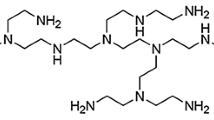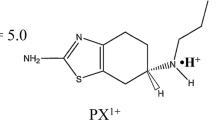Abstract
Enhanced flux of neutral solutes during transdermal iontophoresis is attributed largely to electroosmotic volume flow. In this study, the iontophoretic fluxes of tritiated water (3H2O) and 14C-labeled mannitol through hairless mouse skin (HMS) were determined. The following questions were addressed: (i) What is the variability of water flux during iontophoresis? (ii) To what extent is the iontophoretic flux of a neutral solute correlated with water flux? (iii) Does the intrinsic permeability of the skin to neutral solutes change following iontophoresis? (iv) What is the effect of low pH on electroosmotic volume flow? and (v) Does the skin remain permselective after removal of the stratum corneum? Transport of both water and mannitol reached steady-state levels during 10 hr of constant-current iontophoresis (0.36 mA/cm2). Anodal fluxes exceeded cathodal values. Cathodal mannitol flux was retarded, relative to passive transport, by net volume flow in the opposite direction, such that transport of this molecule increased significantly after the termination of current passage. Anodal equivalent volume flows for water and mannitol, respectively, were 2.7 (±1.3) and 1.23 (±0.59) µL/hr cm2, indicating that only ~50% of the water flux participated in the electroosmosis of mannitol. The passive permeability of water and mannitol after 10 hr of iontophoresis was, respectively, 6 and 30 times greater than the pretreatment values. At pH 7, the cationic permselectivity of HMS was marginal [the Na+ transport number (\(t_{Na} + \)) was determined to be 0.46] and less than that reported for human skin. Lowering the pH values of the solutions on either side of the skin to slightly less than 4 reversed the direction of net volume flow; cathodal flux was greater than anodal flux. When the donor solution was at pH 3.8 and the receptor was pH 7.4, the flux profile was complicated and net volume flow was not obvious. Finally, it was found that electroosmosis from anode to cathode was retained even following removal of the stratum corneum by tape-stripping.
Similar content being viewed by others
REFERENCES
R. R. Burnette and D. Marrero. Comparison between the iontophoretic and passive transport of thyrotropin releasing hormone across excised nude mouse skin. J. Pharm. Sci. 75:738–743 (1986).
R. R. Burnette and B. Ongpipattanakul. Characterization of the permselective properties of excised human skin during iontophoresis. J. Pharm. Sci. 76:765–773 (1987).
M. J. Pikal and S. Shah. Transport mechanisms in iontophoresis. II. Electroosmotic flow and transference number measurements for hairless mouse skin. Pharm. Res. 7:213–221 (1990).
P. G. Green, R. S. Hinz, C. Cullander, G. Yamane, and R. H. Guy. Iontophoretic delivery of amino acids and amino acid derivatives across the skin in vitro. Pharm. Res. 8:1113–1120 (1990).
P. Glikfeld, C. Cullander, R. S. Hinz, and R. H. Guy. A new system for in vitro studies of iontophoresis. Pharm. Res. 5:443–446 (1988).
N. Lakshminarayanaiah. Transport phenomena in artificial membranes. Chem. Rev. 65:491–565 (1965).
D. A. MacInnes. The Principles of Electrochemistry, Dover, New York, 1961, p 85.
J. D. DeNuzzio and B. Berner. Electrochemical and iontophoretic studies of human skin. J. Control. Release 11:105–112 (1990).
S. M. Sims, W. I. Higuchi, and V. Srinivasan. Skin alteration and convective solvent flow effects during iontophoresis. I. Neutral solute transport across human skin. Int. J. Pharm. 69:109–121 (1991).
J. B. Phipps and J. R. Gyory. Transdermal ion migration. Adv. Drug Del. Rev. 9:137–176 (1992).
L. Wearley, J.-C. Liu, and Y. W. Chien. Iontophoresis-facilitated transdermal delivery of verapamil. II. Factors affecting the reversibility of skin permeability. J. Control. Release 9:231–242 (1989).
J. Nightingale, J. Sclafani, and T. Kurihara-Bergstrom. Effect of pH on the iontophoretic delivery of ionic compounds. Proc. Int. Symp. Control. Rel. 17:431–432 (1990).
G. B. Kasting and L. A. Bowman. DC electrical properties of frozen, excised human skin. Pharm. Res. 7:134–143 (1990).
P. G. Green, R. S. Hinz, A. Kim, F. C. Szoka, Jr., and R. H. Guy. Iontophoretic delivery of a series of tripeptides across the skin in vitro. Pharm. Res. 8:1121–1127 (1990).
Author information
Authors and Affiliations
Rights and permissions
About this article
Cite this article
Kim, A., Green, P.G., Rao, G. et al. Convective Solvent Flow Across the Skin During Iontophoresis. Pharm Res 10, 1315–1320 (1993). https://doi.org/10.1023/A:1018969713547
Issue Date:
DOI: https://doi.org/10.1023/A:1018969713547




